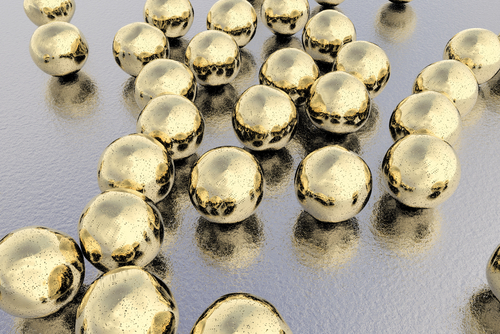A new way of treating endometriosis lesions that uses hollow gold nanospheres called HAuNS, combined with laser-light heat, was proposed in a study published in the scientific journal Small.
The authors of the study, “Specific Photothermal Ablation Therapy of Endometriosis by Targeting Delivery of Gold Nanospheres,” developed the small gold particles to be accompanied by photothermal ablation (PTA) therapy, and specifically targeting cells in endometriosis lesion sites.
HAuNS can absorb energy from infrared light and are good energy conductors. The combination of their nano-scale (microscopic) size with their energy absorption characteristics makes them promising tools for PTA therapy, which is used to treat cancer and other diseases.
Researchers injected animal models of endometriosis with HAuNS, and found the particles accumulated in the endometriotic lesions. HAuNS particles were seen to have low toxicity and good biocompatibility with surrounding healthy tissues and organs.
The delivery of the nanospheres to the lesions sites was then improved by combining a small protein sequence to their structure. This protein sequence could be recognized by a specific cell surface receptor, known as EphB4 receptor, which mediated the direct delivery of the HAuNS to the cells. This receptor is highly expressed by cells that are found in the endometriotic lesions, compared to cells of normal uterus tissue or other organs.
The researchers next tested the therapeutic activity of the particles by exposing the animals to near-infrared (NIR) laser-mediated thermal effects. This energy exposure caused the HAuNS particles to warm and generate heat that killed the cells.
HAuNS-NIR inhibited the growth of the endometriotic tissue, the researchers reported, and induced atrophy and degeneration of displaced endometrium tissue. The lesions presented a more loose structure and disintegrated after the treatment. The animals also recovered from the endometriosis-induced hormonal imbalance and inflammation.
A potential limitation of this therapeutic strategy is the low penetration depth of NIR light. This strategy is based on more superficial endometriotic lesions; but deeper endometriosis lesions might also be targetable, the authors said. Laser beams inserted into deep lesions, such as done in liver cancer and lung metastases, could be a way of using this therapy with deep endometriosis lesions.
Overall, the study showed that HAuNS particles with NIR laser-mediated effects could be improved therapeutic option for endometriosis compared to conventional treatments.
“Our work presents an efficient and safe strategy for endometriosis treatment, and is expected to be a valuable reference for further endometriosis therapy,” the authors wrote.

